Fed raises rates by three-quarters of a point for second straight meeting
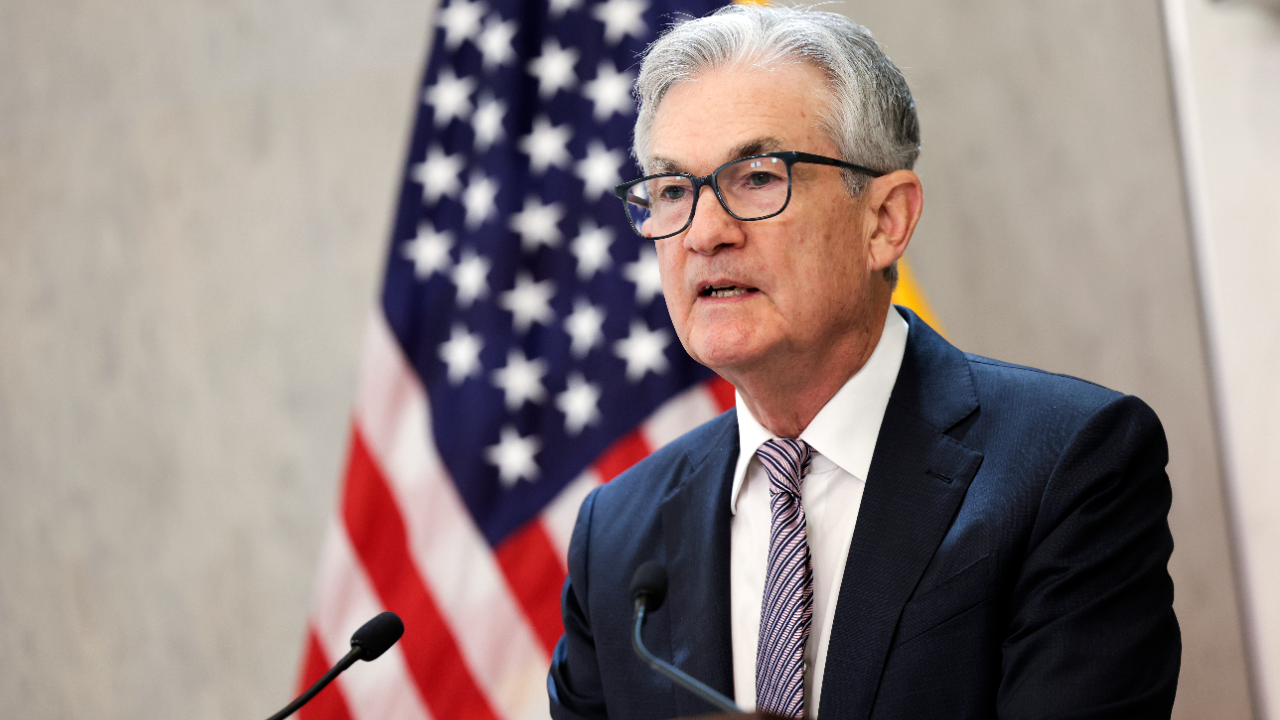
The Bankrate promise
At Bankrate we strive to help you make smarter financial decisions. While we adhere to strict , this post may contain references to products from our partners. Here's an explanation for .
The Federal Reserve lifted interest rates on Wednesday by a massive three-quarters of a percentage point for the second straight meeting, a first since the U.S. central bank’s days of fighting rampant inflation in the 1980s and a move that also raises the risks of derailing the U.S. economy.
The Federal Open Market Committee (FOMC) set 2.25-2.5 percent as the new target range for the federal funds rate — a benchmark borrowing rate that influences every other interest rate in the market, from credit cards, car loans and mortgages to savings yields and certificates of deposit (CDs).
The massive rate hike takes interest rates back to its post-Great Recession peak and also to a point where officials think is just shy of a no-man’s-land, economic red zone often referred to as “the neutral rate of interest.”
Once rates rise higher than that point — thought to be a target range of 2.5-2.75 percent — the Fed will be officially taking steam away from the U.S. economy, rather than adding more to it. Fed Chair Jerome Powell in a post-meeting press conference acknowledged the economy had softened, including in the labor market.
“The committee is strongly committed to returning inflation to its 2 percent objective,” officials said in their post-meeting statement. “Recent indicators of spending and production have softened. Nonetheless, job gains have been robust in recent months, and the unemployment rate has remained low.”
The move, no doubt, raises risks of tipping the U.S. economy into a recession. U.S. employers still have a near record number of job openings and the unemployment rate is near a half-century low, but the number of Americans applying for unemployment insurance has risen 47 percent since the Fed’s first rate hike in March. That follows news of major tech companies from Apple to Google announcing plans to slow hiring, while other companies renege internship or employment offers.
It’s a price the U.S. financial system might have to pay to cool the hottest price pressures in 40 years, with inflation rising in June to a fresh high of 9.1 percent from a year ago. Powell said after the U.S. central bank’s first 75 basis point rate hike in June that those massive moves “would not be common,” but the report solidified the need for officials to continue front-loading increases at the July gathering.
“Two three-quarter percentage point hikes in a row – with more rate hikes still to come – mean a summer of discontent for borrowers with credit card debt, home equity lines of credit, or other variable rate debts that will see rates rising in big chunks over a short period of time,” says Greg McBride, CFA, Bankrate chief financial analyst. “The cumulative effect of this sharp rise in rates has cooled the housing market and caused the economy to start slowing, but hasn’t done much to lower inflation.”
So far this year, the Fed has now raised rates by 2.25 percentage points, the most in a single year since 1994. More hikes, however, are likely on the way, though the pace of those upcoming increases is far from certain.
“It likely will become appropriate to slow the pace of increases while we assess how our cumulative policy adjustments are affecting the economy and inflation,” Powell said.
The Fed’s rate hike: What it means for you
Mortgages and refinance rates
Don’t be too sure of continued increases in mortgage rates after the Fed’s July rate hike. The 10-year Treasury yield — the main benchmark for the 30-year fixed-rate mortgage — plunged to 2.81 percent on July 25, down 0.68 percentage points from its June 14 high of 3.49 percent as investors brace for a strong likelihood of an economic slowdown or recession at worst.
To be sure, mortgage rates have surged in the weeks in 2022, jumping to 5.76 percent in the week that ended on July 20 from 3.04 percent a year ago.
Homeowners who’ve already locked in a fixed-rate mortgage will feel no impact from the Fed’s moves because their interest rate is set for the life of the loan. Would-be homebuyers, however, could be in for a wild ride through the rest of the year. If inflation keeps inching higher, the 10-year Treasury yield could take more leaps, as investors dump those inflation-prone investments for bigger returns. But news of a continued slowdown in the job market or other corners of the financial system could lead to lower long-term yields, especially if the Fed indicates that it’s likely to slow the pace of rate hikes at its three remaining meetings in 2022.
Higher rates are already starting to cool some corners of the housing market. Refinance activity has fallen off by 80 percent in the first three months of 2022, according to mortgage data firm Black Knight. Certain lenders might offer better deals than others to be more competitive, underscoring the importance of shopping around.
And if you’re still waiting to lock in your mortgage rate, it might pay to keep an eye on rates and wait if you can.
Borrowers
As is always the case in a rising-rate environment, consumers will be better off if they can refinance variable-rate debts into fixed loans and shrink any high-interest debt. If you have credit card debt, for example, consider utilizing a balance transfer card that could help shave off hundreds of dollars worth of interest payments a month, depending on your balance. Many cards on the market offer 0 percent introductory annual percentage rates (APRs) for 12 to 21 months.
The burden of credit card debt is clear. The average credit card rate was 16.16 percent a year ago, even when the Fed’s benchmark interest rate was still at near-zero percent. That has so far soared 1.09 percentage points to 17.25 percent, as of the week that ended on July 20, according to national Bankrate data.
Savers
If you have any amount of cash stashed away in a savings account, you’ll have it good in a rising-rate environment.
While traditional brick-and-mortar banks have barely budged their annual percentage yields (APYs), online banks are likely just getting started lifting yields.
Bankrate’s rankings of 14 high-yield savings accounts in July 2021 were offering an average yield of 0.51 percent, ranging from as high as 0.55 percent and as low as 0.40 percent — a rate about nine times the national average at the time.
Today, however, 17 banks ranked for July 2022 pay an average yield of 1.42 percent, almost 13 times the national average. The highest-yielding savings account in the nation is offering a 2.02 percent APY, the best offer since early 2020.
Taking advantage of an online bank — which is able to offer more competitive rates than depository institutions but still has all the protections of federal deposit insurance — is a strong hedge against today’s 40-year high inflation.
With rates likely still on the rise, it could still be too early to lock in your money with a CD, particularly if it matures in longer than a year. Not to mention, liquidity is also important, especially if the money you’re stashing away would cover you in the event of an unplanned, emergency expense.
Investors
Investors have endured notable volatility in almost every asset class, from stocks and cryptocurrency to bonds and commodities. To start the year, the S&P 500 is down more than 17 percent, while bitcoin is down more than 50 percent, as the Fed takes liquidity and easy money away from the marketplace.
Part of the reason for the volatility is tied to Fed and economic uncertainties. Few investors argue the economy still needs the punchbowl as 40-year high inflation batters companies and consumers, but the ultimate fear is the Fed could do too much, kickstarting a recession.
All of those factors only point to a continued bumpy ride, though investors will be rewarded for maintaining a long-term perspective and seeing 2022’s lows as a significant buying opportunity.
How much more will the Fed hike rates this year?
The Fed back in June expected to lift rates to a target range of 3.25-3.5 percent by the end of this year. If it comes to fruition, officials would have to raise rates by another amount larger than 25 basis points at one of its three remaining gatherings this year.
Taken together, 3.25 percentage points of tightening would be the most in a single year since the 1980s. Some economists, however, say 2022 could be the most hawkish year for the Fed on record, considering the Fed is also well underway with shrinking its massive portfolio of assets that ballooned to nearly $9 trillion.
Powell, however, stopped short of giving any guidance on how big any of the Fed’s subsequent rate hikes could be, meaning officials likely want to keep their options open depending on how incoming data evolves.
“We think it’s time to just go to a meeting-by-meeting basis and not provide the kind of clear guidance that we had provided,” he said.
Crucial to how much further officials plan to move rates depends largely on what happens with inflation. Even with the highest price pressures in 40 years, consumers have been willing and ready to spend, according to retail sales data from the Department of Commerce.
Helping Americans eat those price pressures is a stockpile of more than $2.1 trillion in excess savings, according to a Morgan Stanley analysis from May. But others might have no choice to weather those increases, considering consumer staples are among the items most severely impacted by decades-high inflation.
A worsening job market, however, puts robust consumption in jeopardy. Economists surveyed for Bankrate’s First-Quarter Economic Indicator poll project employers will add 193,000 new positions each month over the next year, a sharp slowdown from the past year’s 545,000 average monthly pace.
“We’re not trying to have a recession, and we think there’s a path for us to be able to bring inflation down while sustaining a strong labor market,” Powell said, adding he does not believe the U.S. economy is currently in a recession. “We know that the path has clearly narrowed based on events outside of our control, and it may narrow further.”
The comments suggest Powell and Co. might be more concerned about inflation remaining stubbornly high than they are about starting a downturn that worsens the job market, says Dan North, senior economist at Allianz Trade North America.
“You’d have to endure this blistering inflation that is just destroying savings, ruining purchasing power and reducing the quality of your life,” he says. “That’s the trade off, and at this point most people would say, ‘Let’s get rid of this inflation, even if it risks slowing the economy.’”
Related Articles
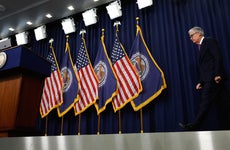
Take these 12 steps as the Federal Reserve keeps interest rates high
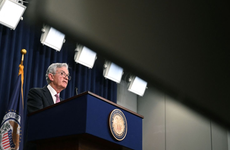
Fed hikes interest rates by three-quarters of a point to combat decades-high inflation
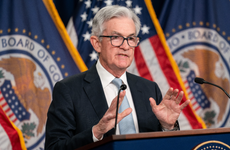
Fed raises rates by half a point, sees rates topping 5% in 2023
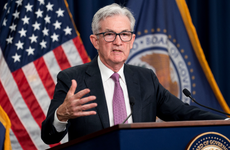
Fed lifts rates by another three-quarters of a percentage point to curb runaway inflation